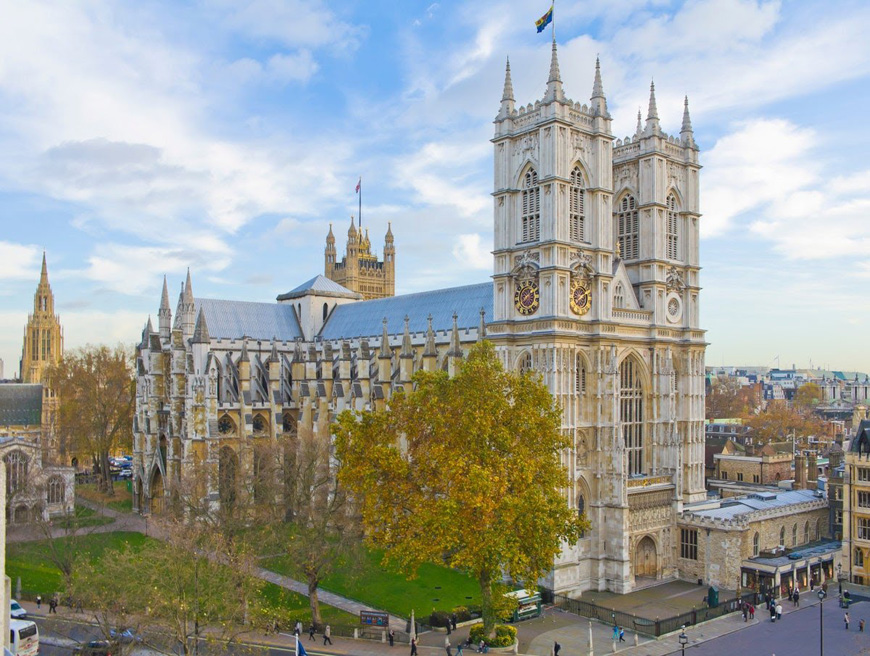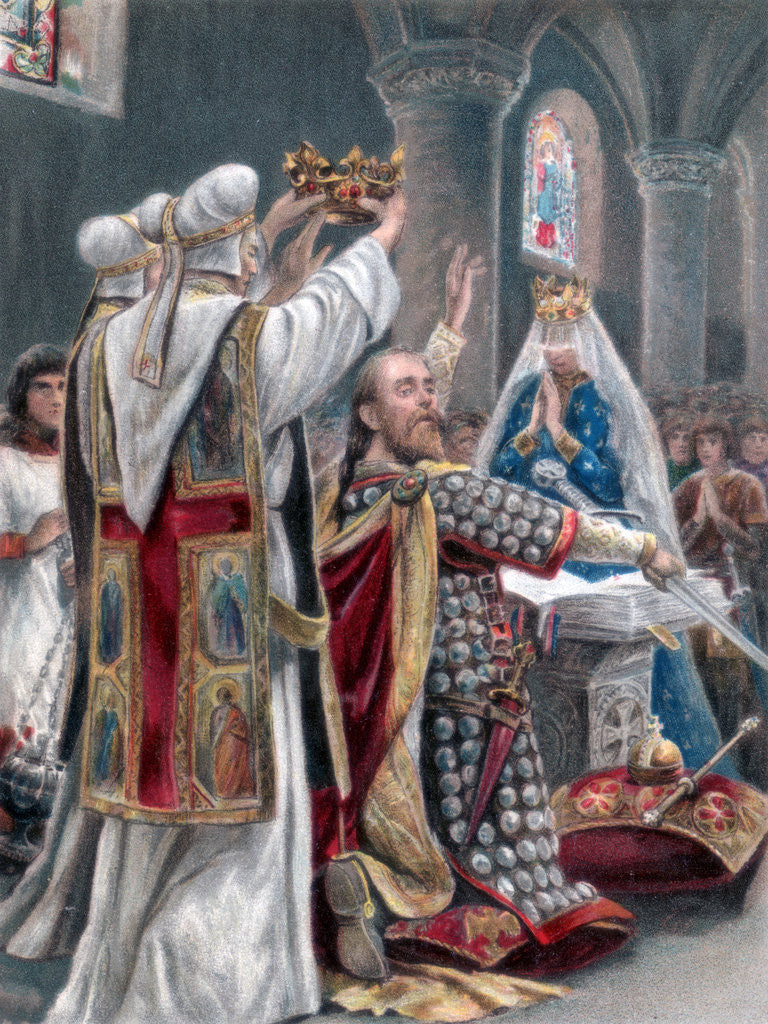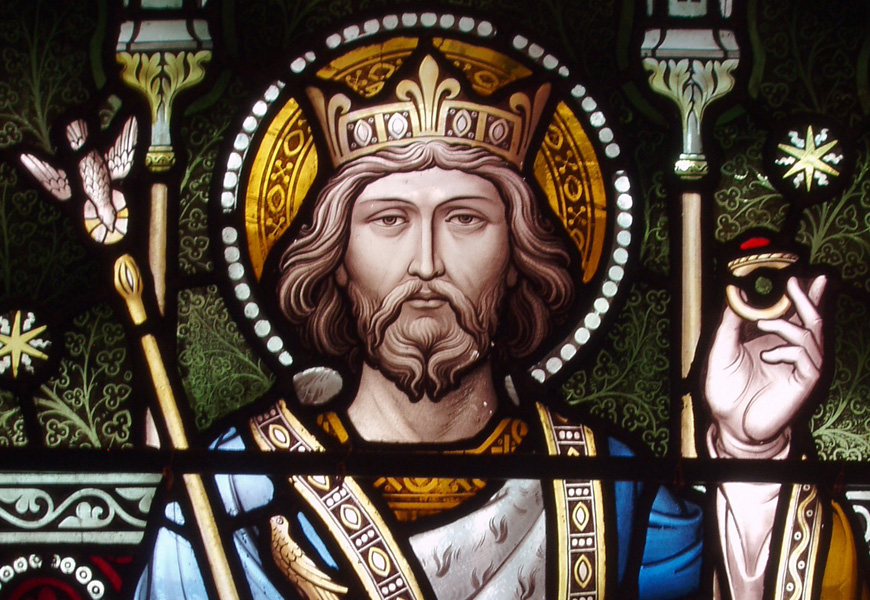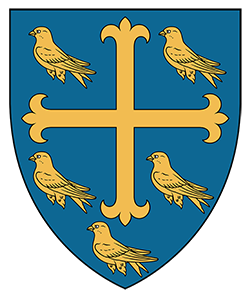Edward the Confessor - King of England (1042-1066)
Edward the Confessor was King of England from 1042 until his death on January 5th, 1066. He is regarded as the last King of the House of Wessex and was canonized as a saint in 1161. His death led to a succession crisis that gave rise to the Norman Conquest of England and the dawn of the Castle Age.

Edward was born on April 4th, 1003, in Islip, Oxfordshire, England. He was the seventh son of Æthelred II of England (Æthelred the Unready) and the first son by his second wife, Emma of Normandy. During his childhood, England was the target of many Viking raids. Following the Viking seizure of the throne under Sweyn Forkbeard and his son Cnut in 1013, his mother Emma fled to Normandy and was soon followed by Edward.
In 1036, Edward and his brother Alfred returned to England, their mother Emma claimed, in response to a letter forged by Harold Harefoot inviting them to visit her. However, most historians believe Emma did ask them to visit to counter Harold Harefoot's popularity. Alfred was captured by Godwin, Earl of Wessex, and was turned over to Harefoot. Godwin had Alfred's eyes blinded by a red-hot poker to make him unsuitable to be a King, and Alfred died soon after from his wounds. This act would remain with Edward and be the source of his hatred towards Godwin. Edward was victorious in a skirmish near Southampton and then returned to Normandy.
Edward spent many years in Normandy. In 1041, King Harthacnut (Cnut II) asked Edward, his half-brother (his mother's son by Ethelred II), to return to England from Exile in Normandy to become a member of his household. Harthacnut was unmarried and had no children, so he probably made Edward his heir.
On June 8th, 1042, Harthacnut died at Lambeth, "He died as he stood at his drink. And he suddenly fell to the earth." Following the King's death, Edward ascended to the throne of England. When Harthacnut died, Godwin was England's most powerful Earl and supported Edward as King. The Anglo-Saxon Chronicle describes Edward's popularity at his accession: "Before Cnut II was buried, all the people chose Edward as King in London."
On Easter Sunday, April 3rd, 1043, Edward was crowned King of England at Winchester Cathedral, the royal seat of the West Saxons. During his reign, England saw peace, prosperity, and stability.

In 1043, Godwin's eldest son, Sweyn, was appointed to an earldom, which included Berkshire, Gloucestershire, Herefordshire, Oxfordshire, and Somerset. Godwin's son Harold was made Earl of East Anglia.
On January 23rd, 1045, Edward married Edith of Wessex, daughter of Earl Godwin. Edward restored the strong monarchy early in his reign, showing himself as "a vigorous and ambitious man, a true son of the impetuous Æthelred and formidable Emma." Edward was King, but Earl Godwin and his sons gained power and influence.
In the 1040s, King Edward established his royal palace on the banks of the River Thames. Close by was a small Benedictine monastery that was founded under the patronage of King Edgar and St Dunstan around 960. Edward chose to re-endow and enlarge the monastery into a large stone church in honor of St Peter the Apostle. The church became known as the "west minster" to distinguish it from St Paul's Cathedral (the east minster), further down the River Thames. It was the first Norman Romanesque church in England.
In September of 1051, Edward was visited by his brother-in-law, Eustace II of Boulogne. His men caused a ruckus in Dover, and Edward ordered Earl Godwin to punish the town's burgesses, but Godwin refused and took their side. Edward used this as the chance to bring Godwin to heel. The Archbishop of Canterbury accused Godwin of plotting to kill the King, just as he had killed his brother Alfred in 1036.
Godwin's position diminished as his men were unwilling to challenge the King. Godwin and his sons fled to Flanders and Ireland. Godwin's son Sweyn went on a pilgrimage to Jerusalem but died on the way back. Godwin and his other sons returned to England the following year, this time with an army. Edward was forced to give way and restore Godwin and Harold to their Earldoms to avoid a civil war.
In October of 1065, King Edward was hunting with Tostig Godwinson, Earl of Northumbria the and younger brother of Harold Godwinson, when Edward's thegns in Northumbria rebelled against Tostig's rule and killed some 200 of his followers. The thegns nominated Morcar as Earl of Northumbria and headed south, meeting with Harold Godwinson in Northampton. Tostig accused Harold of conspiring with the rebels before the King and demanded that the revolt be suppressed. But no one would fight to support Tostig, and Edward was forced to banish him from court, which may have caused a series of strokes that led to Edward's death.

King Edward was too ill to attend when the new Westminster Abbey was consecrated on December 28th, 1065, just a few days before his death.
On January 5th, 1066, Edward the Confessor died without an heir. On his deathbed, Harold Godwinson claims that Edward said, "I commend this woman with all the kingdom to your protection." Edward spoke of his wife and Harold's sister, Edith of Wessex.
The Norman position was that Edward had designated William, Duke of Normandy, as his heir and that Harold Godwinson had been sent to Normandy as an emissary from England to apprise William of Edward's decision.
Harold Godwinson had previously led successful raids into Wales in 1063 and negotiated with his rivals in Northumbria in 1065 so that he would succeed Edward. Upon Edward's death, Harold Godwinson was approved by the Witenagemot, an Anglo-Saxon council of wise men, and crowned King Harold II of England on January 6th, 1066.
Edward the Confessor was buried at Westminster Abbey in London, England. He was canonized on February 7th, 1161, by Pope Alexander III.
William, Duke of Normandy, began forming an army to invade England and fight Harold Godwinson for the crown, culminating at the Battle of Hastings on October 14th, 1066.
